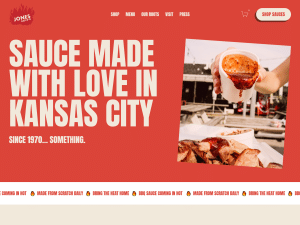How Much Do Food Websites Make?
Introduction
The internet has transformed the way we acquire information, connect with one another, and even conduct business. Food websites, in particular, have grown in popularity in recent years, offering a wide range of gastronomic pleasures, recipes, reviews, and more. Food websites have become a lucrative niche due to the growing interest in food culture and the increasing number of individuals looking to the internet for cooking inspiration and eating recommendations. In this article, we’ll look into the intriguing world of food websites and see how much money they may make. https://citibuildconstruction.com.au/builder-double-bay/
The Diverse Landscape of Food Websites
Food websites cover a wide range of platforms, catering to a wide range of consumers and interests. Some specialize in delivering delectable recipes and cooking ideas, while others focus on restaurant reviews, food blogging, and food photography. Furthermore, some websites cater to certain dietary needs, such as vegan, gluten-free, or keto, and others focus on regional or international cuisines.
The variety of food websites is critical in evaluating their earning potential. Websites that carve out a distinct niche and develop a loyal audience have a better chance of earning a considerable income. For takeaway website design see here
Revenue Streams for Food Websites
Food websites use a variety of revenue streams to monetize their content and keep their operations running. The following are some of the most prevalent ways for food websites to generate revenue:
1. Advertising
Many food websites rely heavily on advertising to generate cash. They collaborate with ad networks or direct advertisers to display banner advertisements, native advertisements, or sponsored content. The amount earned by advertising is mostly determined by the traffic to the website, the niche, and the efficacy of the adverts in engaging people.
2. Affiliate Marketing
Another prominent revenue model for food websites is affiliate marketing. Website owners can earn a commission on each sale produced by their referral by advertising products related to cooking, kitchen appliances, or specialized ingredients via affiliate links.
3. Sponsored Content and Partnerships
Food blogs with a large following frequently cooperate with companies and businesses on sponsored content and collaborations. This can include writing sponsored blog pieces, filming recipe videos with a certain product, or holding sponsored events. Brands are eager to pay for visibility to the engaged audience on the website.

4. Subscription Services
Some food websites use a subscription-based approach to provide premium content or exclusive services. Subscribers get unique recipes, cooking classes, customizable meal planning, and ad-free surfing. This consistent revenue stream assists websites in maintaining a consistent revenue source.
5. E-Commerce and Merchandise
E-commerce opportunities for food websites include selling cooking tools, branded items, and even cookbooks written by the website’s creators. A successful e-commerce enterprise requires successful branding and a dedicated following.
6. Crowdfunding and Donations
Crowdfunding platforms and contribution options enable food websites to solicit financial assistance directly from their target audience. This strategy is frequently utilized by smaller websites or those that are just getting started.
Factors Affecting Earnings
A food website’s revenues might vary greatly depending on many major factors:
1. Website Traffic
The amount of visitors to a website has a direct impact on its earning potential. More ad impressions, affiliate clicks, and prospective customers for sponsored content result from higher traffic levels.
2. Audience Engagement
Active and engaged audiences are more likely to interact with advertisements, purchase recommended products, and subscribe to services. Websites with a loyal following make more money.
3. Niche and Competition
The precise niche that a food website targets can have an effect on its revenues. Highly competitive niches may struggle to attract advertising or secure valuable collaborations.
4. Quality of Content
High-quality, valuable content is critical for audience retention and enticing sponsors. Websites with excellent photographs, well-written recipes, and compelling videos have a better chance of success.
5. SEO and Social Media Presence
Good SEO methods and a strong social media presence contribute to higher visibility, which can raise a website’s revenue potential.
Case Study: Successful Food Website Earnings
Let’s look at an example case study to better grasp the income possibilities of food websites:
Consider a food blog that focuses on plant-based recipes, sustainable cooking methods, and eco-friendly kitchen advice. After several years of hard work, the blog has amassed a sizable following of around 500,000 monthly visitors. The following is a breakdown of its prospective earnings:
- Advertising: Due to its high traffic, the blog can make between $2,500 and $5,000 each month from display ads.
- Affiliate Marketing: The site can earn $1,000 to $3,000 per month in affiliate commissions by promoting eco-friendly kitchen products and plant-based components.
- Sponsored Content and Partnerships: Because of the blog’s unique appeal, it can earn $3,000 to $5,000 per month in sponsored content and partnership partnerships.
- Subscription Services: By providing unique meal planning and cooking classes, the site may attract 500 subscribers at $10 per month, resulting in a monthly revenue of $5,000.
- E-commerce and products: Selling environmentally friendly kitchenware and products can bring in an extra $2,000 to $4,000 each month.
This fictional food website may make anything from $14,500 to $22,000 per month.

Conclusion
Food websites have grown as a viable online niche, attracting consumers with a wide range of culinary interests. While earnings might vary greatly depending on factors such as traffic, engagement, and monetization tactics, successful food websites have demonstrated their ability to create significant income. With the growing interest in food and cooking, food websites are likely to thrive in the digital landscape for years to come, offering culinary fans with a multitude of delectable information and insights.







